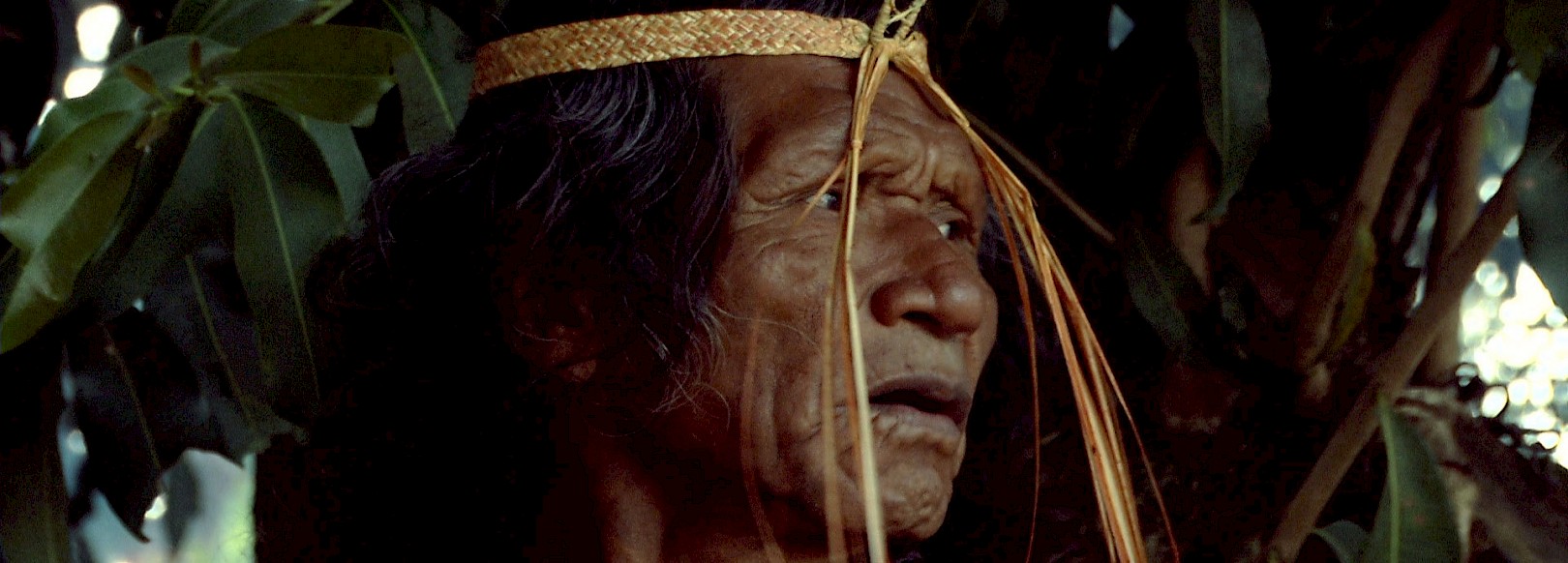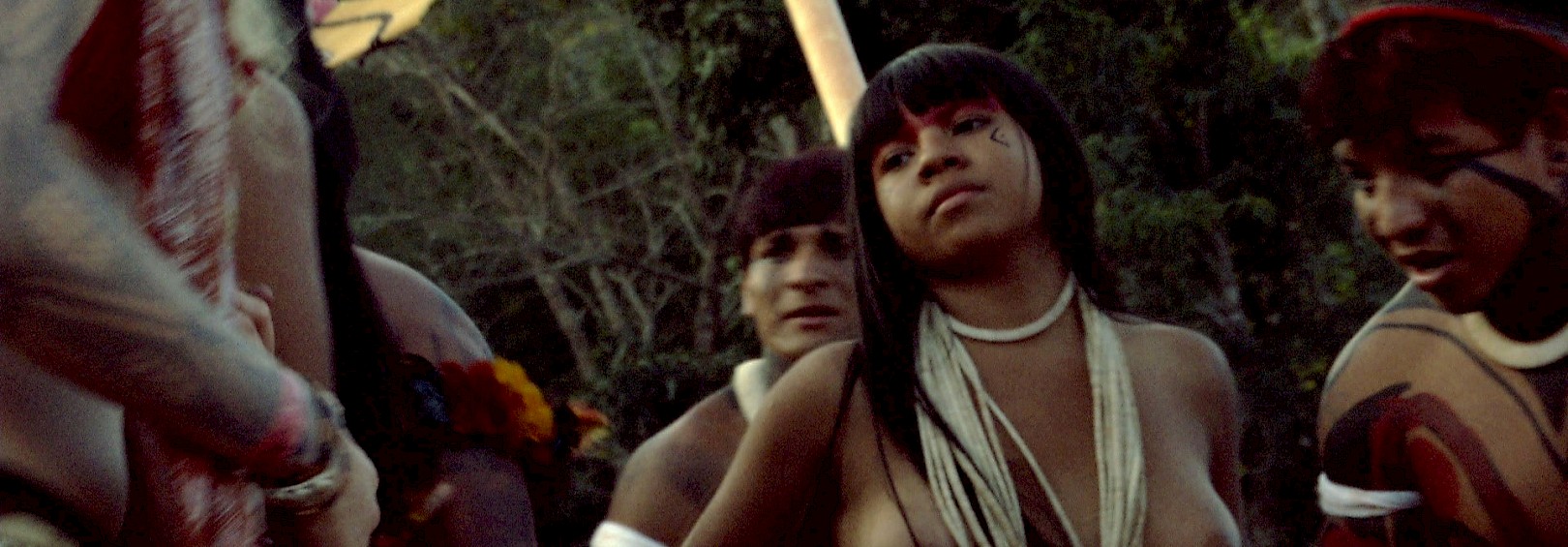Album
The Multi-ethnic Village
Moitará: the encounter between different cultures. In the Alto Xingu region, this word synthesizes an ancestral practice for those who have long been searching for life – and afterlife – throughout the Americas. Knowledge circles between diverse peoples had once been a common way to get to know, learn, evolve, and let one’s self grow by tapping what others know. From the locations of wisdom and active listening, the fairs were sketched onto the map of Brazil: exchanges. And in this way Indigenous cultures dotted the first marks for a creativity and respect-based geography.
“The Indigenous peoples can reveal a different way of life”
Clezio Krahô
One village, many peoples. The Amerindian wisdom shared in Brazilian lands with whoever wants to learn for a whole week in a place located in the depths of Brazil: the Chapada dos Veadeiros, in Goiás state. The cerrado landscape – a transitional biome between humid and dry regions – and its exuberant waterfalls have welcomed Indigenous and non-Indigenous people since 2007 to experiment a new (or is it old?) world, with an entire day devoted to experimenting each one of the local cultures. Over twenty ethnicities have gathered over the years of meetings that also welcome researchers, documentarians, artists, and people interested in Indigenous cosmogony.

Made from cuité, a calabash-type of fruit from the mid-western region of Brazil, the maracás are musical instruments that follow the steps and create the sound atmosphere for the Krahôs. The women and men forming the group are representatives from the almost three thousand people living in the northeastern region of Tocantins state. They speak Timbira, a Jê language branching from the linguistic tree Macro-Jê and use thatch as an omnipresent element in their ritual and everyday arts. This material is the ribbon that adorns their heads when they dance rhythmic steps alternated in groups of men, then women, and then mixed.
“It’s a very important meeting for us to get to know our relatives.
Everyone is empowered by the meetings and talks"Toé Fulni-ô

The backcountry of Pernambuco state, the sertão, is home to about five thousand Fulni-ô Indians who managed to preserve their original language, Ia-Tê, even after five hundred years of persecution. Music, fire, water, plants, and fish… sacred elements that are celebrated in rituals such as the mysterious Ouricuri: a secret ritual that starts at the end of august and lasts for three months, while all the Fulni-ô people stay together at the Aldeia Ouricuri. The entrance of other people in the Aldeia is forbidden during that period.
With painted bodies, cocares, leafy skirts. They play flutes and clap their hands, turned into instruments: stories of nature are sung in the language that means strength and resilience to them.
“Our language was cultivated in the rituals”
Cacique Tanoné Kariri - Xocó

The Kariri-Xocó comprise a group of roughly two thousand people by combining the Kariri and Xocó ethnicities, now residing in the state of Alagoas. A few words from their original language have been preserved in sacred rituals and in the preparation of plants such as Jurema: the root is removed and prepared exclusively by pajés and caciques, the main leaders of their people.

The Kayapó display their impressive beauty in bodies painted with jenipapo, urucum and other seeds: body painting is a part of being human for some six thousand natives living in Xingu River’s affluents in the states of Mato Grosso and Pará. The paintings, which play both social and magical-religious roles, resemble nature’s creatures and carry the group’s ethical and aesthetical language. Their dialect, also a part of the Macro-Jê linguistic tree, is preserved by riverside villages alongside the igarapés and thinner streams branching through places where women are responsible for sowing the crops and executing the body art and men mostly take care of hunting and fishing.

“Real people”, would be the literal translation of the word Xavantes – which is how approximately thirteen thousand people call themselves in the vicinities of the Roncador mountain range, in Mato Grosso state. As frequently observed in ethnicities belonging to the Jê linguistic tree, the Xavantes are known for their complex rituals, particularly for the rites of passage into adulthood for men, when magical knowledge is passed on to the new generations.

The Yawalapiti live in the southern portion of the Parque Indígena do Xingu (a reservation area created by the Brazilian Government to assure the permanence of the lifestyle practiced by the country’s native cultures). Organized in circular villages where the center is destined to housing men with sacred flutes. There are about two hundred natives speaking an Aruak language and living basically from fishing and agriculture.
“Politics must be transformed in favor of the Indigenous peoples.
And always maintain a dialogue with them”Clezio Krahô
During the meetings at Aldeia Multiétnica, Krahô and Fulni-ô and Kariri-Xocó and Kayapó and Xavante and Yawalapiti: many and different Indigenous cultures teach that there are multiple Brazils in the woods and the forests, too. So many people with knowledge of nature and ancestral magic sit around a table to talk about that which unites them: politics, representation, legislation… human rights and environment preservation, too, since there are no boxes into which all the things in the cosmos can be separated.

“The word Indian really scales down
the beauty, the wealth, the complexity
that the Indigenous peoples represent”Daniel Munduruku, writer and Indigenous activist
The Indigenous people learn from the Brazilian society and the Brazilian society learns from the Indigenous people, they all dance together: if this rehearsal can leave traces along the way, we can come closer to a more just model for humankind – considering the range of the diversity, and working to understand and keep it.
interview
Juliano Basso
16:44
interview
Daniel Munduruku
42:44
interview
Toé Fulni-ô
03:23
interview
Tanonè Kariri-Xocó
03:37
ritual
Povo Krahô
25:30
ritual
Povo Fulni-ô
13:53
ritual
Povo Yawalapiti
06:55
ritual
Povo Xavante
09:40
ritual
Povo Kariri-Xocó
09:36
ritual
Povo Kayapó
13:53
outtake
Os Pífanos da Aldeia Multiétnica
03:37
